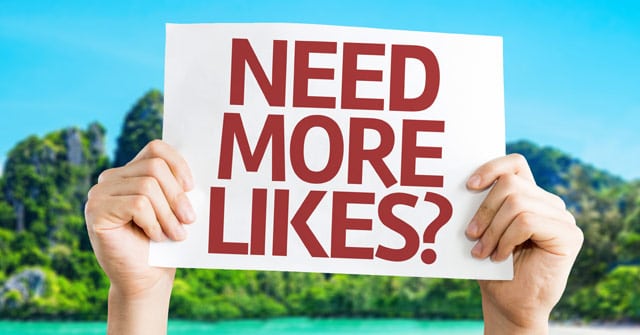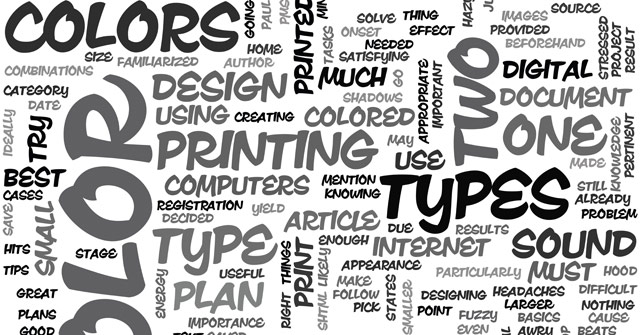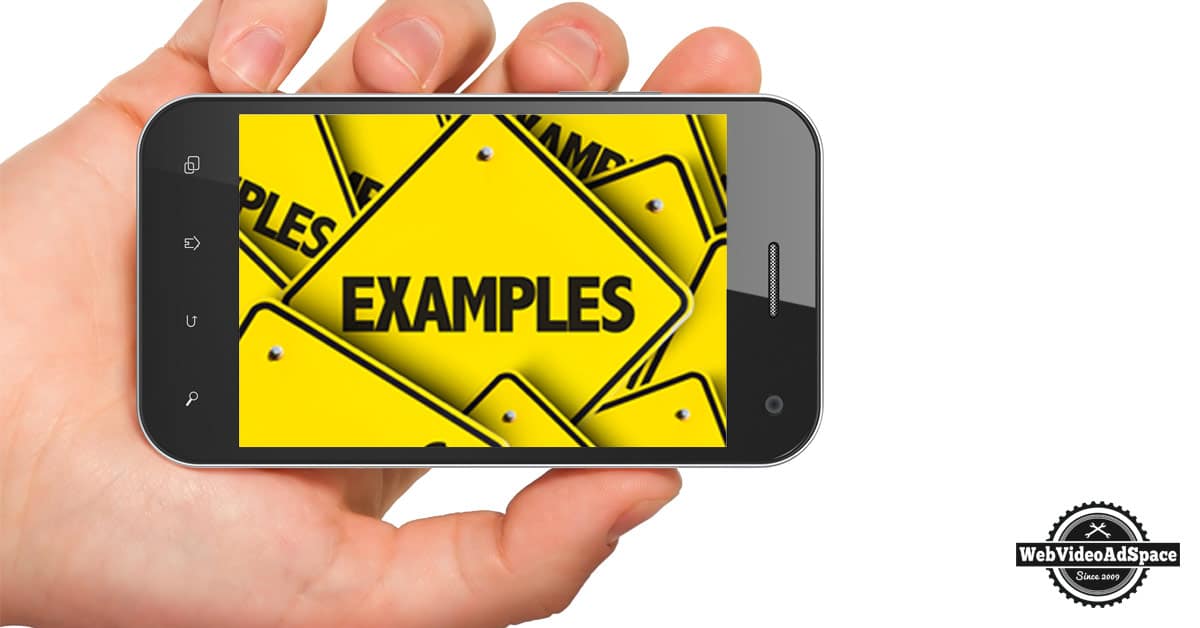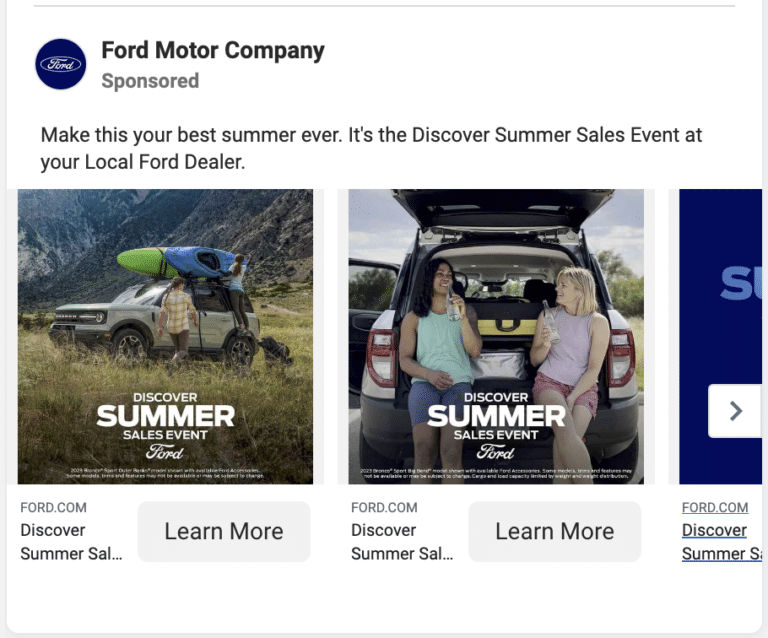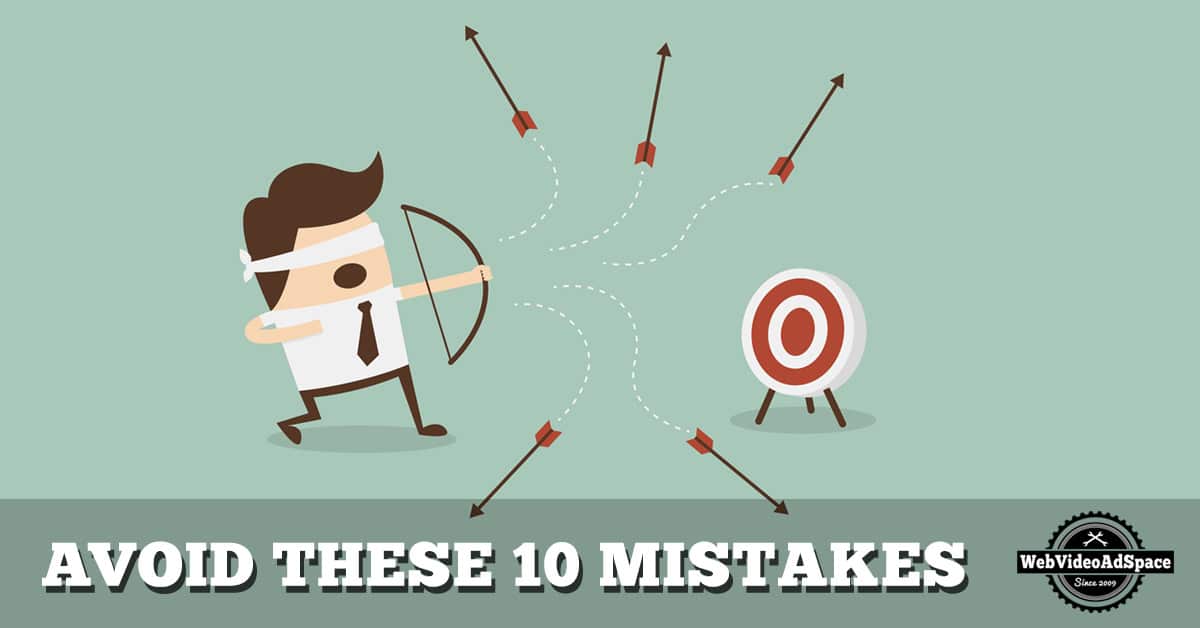
The Top 10 Facebook Marketing Mistakes
Since Facebook is one of the most highly trafficked websites in the world, it is understandable to want to harness its awesome power.
As the number one social media site in the world it possesses a great deal of clout.
With this kind of muscle at their fingertips, entrepreneurs are constantly looking for new ways to use Facebook’s billions of users to grow sales.
Facebook is only getting stronger as time goes on.
Not only does it provide traffic, but it provides productive traffic to those in the know.
While Facebook marketing might seem deceptively simple, you will need the correct plan in order to market effectively.
Too many people ignore this part of the process and jump in with both feet.
It rarely turns out well.
This post provides an overview of the most common mistakes made by marketers on Facebook.
Learn how to avoid these common pitfalls and turn these common negatives into positives for your business.
A highly effective Facebook campaign is waiting for your, so let’s get started.
1. Ignoring Paid Advertisement
In case you haven’t heard the news, Facebook is pay-to-play.
Too many companies are competing for the limited space available on the news feed.
Plus, it’s in Facebook’s own interest to make sure they get paid.
So does this mean it’s not worth the effort to market on Facebook?
Absolutely not!
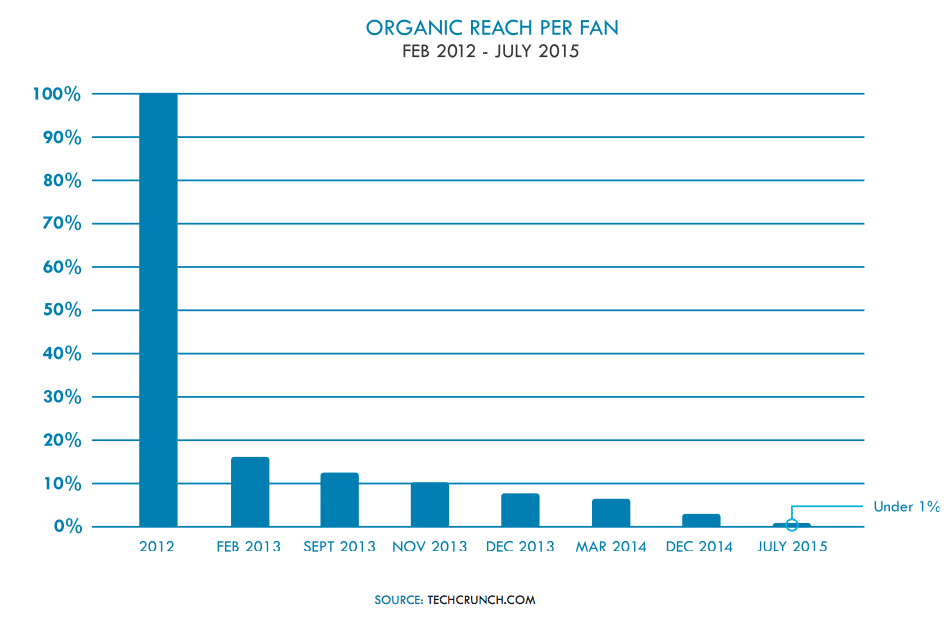
The level of organic reach is nearly zero.
It’s still a great value. It can’t be beat.
Given the laser guided targeting abilities and the relatively low cost to reach those target audiences it’s still the best deal online.
The mistake is disregarding this reality and continuing to play the game like it was still 2013.
If you’re going to spend the time to find and create content to share for the benefit of your fans, you’ve got to sponsor it.
If you don’t, no one will see it.
Facebook Business pages started out as Fan pages.
That’s how most brands should be using them – a place to keep fans enthusiastic and engaged.
Now most followers may not qualify as full-fledged fans, but they are people who have a natural passion or interest in your field, topic or industry.
What’s more, they like your approach.
The trick is to spend the time to really identify this audience.
Facebook has given marketers tremendous tools to target audiences including, demographics, interests, and behaviors.
Plus, this investment will pay off in the long run as more competitors begin marketing on Facebook.
You will already know how to reach your audience.
Invest in discovering the optimal group of fans that overlaps with your prospects and engages with your content.
2. Forgetting to Focus On Socializing
When advertising on social media, it can be easy to forget the social aspect of things.
When you allow yourself to forget about the social part of social media, you can lose out on a number of viable marketing opportunities.
You may be the most prolific Facebook poster of all time, but if you expect to get results by mere repetition, you are falling into a trap.
Creating informative, helpful, inspirational, or humorous posts is pivotal.
But it is even more important to use Facebook as a means for interacting with potential clients and developing rapport.
Responding to comments in a friendly and courteous manner is a great way to build an audience.
People like to develop a personal connection with their brands in the modern marketplace.
Facebook is a great tool for facilitating this kind of bond.
You want fans tp like your posts, comment on them, or share them with their friends.
Once they do any of the above, your posts will appear in their news feed more often.
Socializing ensures that your content is seen by the maximum amount of people.
3. Overzealous or Insensitive Posting
A Facebook page is something you build for your fans.
It has a positive side effect for your business’ brand and bottom line, but first and foremost, it’s for “them”.
What about your posts gives something of value to your followers’ feeds?
Clogging people’s news feed with excessive posting has derailed many business marketing plans.
It can derail yours if you are not careful.
Businesses that post too much clog people’s news feeds.
Posting dozens of times each day will cause your content to be ignored at best and lead to your page being reported to Facebook at worst.
Because of overzealous posting, Facebook developed an algorithm to keep people from seeing too many of these posts.
This means that prolific posting will NOT draw in additional clientele and may have the effect of turning them away from your goods and services completely.
Users will unlike your page and in instances like these, it is next to impossible to get that like back.
Make your posting consistent enough to draw eyeballs in, but avoid flooding your audience with a deluge of useless content.
Anything more than five posts in one day is overkill.
4. Ignoring The Rules of Facebook
Facebook is not a free for all. There are rules that must be followed in order to continue using the site.
Successful marketing cannot take place if your account is banned or blocked.
Marketers often forget to read the Facebook rules.
This leads to Facebook deleting their pages because of habitual rule breaking.
Even something as simple as your cover photo is subject to scrutiny.
The cover photo that you use cannot contain any content protected by copyright.
If your page is about regulated goods or services, gambling, or prescription pharmaceuticals should pay extra attention to the rules.
Contest and sweepstakes sponsors are completely responsible for the “lawful operation of that promotion”, must release Facebook from liability, and make it clear that it is not sponsored by Facebook.
Again, if you’re going to run promotions and contests, double check the rules.
While many users do not know about these rules, pleading ignorance will NOT save your page.
Take a moment to look up the rules and make sure your page is in accordance.
Failure to do so could result in the loss of everything that you worked for.
5. Laziness Is the Enemy of Progress
No matter what venture you are working on, laziness is the catalyst for many downfalls.
Failure to complete your business’ Facebook page in a timely fashion can cause your demise before you have even gotten started.
If you are not going to put your best foot forward you may as well not even start in the first place.
Fill out the entirety of your profile, take the time to locate a great profile picture and provide as much information as possible.
The more information you provide, the more accessible you become to your clientele and fans.
While it was said before, do not be lazy when it comes to interaction with those who take the time to comment on your posts.
It takes one minute to type a response and it shows the people who’ve taken the time to like your page that you truly care.
6. Making Likes the Be All End All
The likes that your page receives should always be paid attention to, but they are not the be all end all of your business.
Too much focus on getting likes can cause an entrepreneur to miss out on the larger opportunity in front of them.
Likes are just a tiny portion of the whole puzzle.
Even if a page has over one million likes, proper user cultivation and management plays a role in ensuring the usefulness of these likes.
A large following is good, but a loyal following is even better.
Excessive focus on how many likes your page gets means ignoring results, so avoid this tactic as much as possible.
Are the users who like your page also sharing your content with their friends and allowing your message to spread?
Do these likes lead to more traffic for your company’s website?
Have your sales increased since you established a Facebook page?
These are the questions that need to be answered in order to achieve success.
7. Too Much Writing, Not Enough Visuals
Thanks to social media, people have become more attracted to visuals than text.
The majority of Facebook users do not enjoy reading long, drawn out posts.
Make sure that your posts are short and to the point.
The KISS principle certainly applies here: Keep It Simple, Stupid!
The best way to attract attention is with compelling visuals, coupled with text that illustrates your point.
If people are writing “TL: DR” in the comment section of your posts, this means “Too Long, Didn’t Read”.
Most people do not have the time or energy to read a lengthy post, so bear this in mind.
Focus on providing top notch visuals and keep the marketing jargon to a minimum.
Make your marketing posts half as long and twice as strong.
Bombarding audiences with an ocean of text will only serve to turn them away.
8. Refusal to Focus On Branding
When posting content, getting attention should NOT be your primary objective.
This is a typical mistake made by budding entrepreneurs.
While the occasional diversion is okay, nine out of every ten posts needs to be focused on your personal brand.
This does NOT mean that nine out of every ten posts needs to be focused on marketing, though.
Focusing too much of your efforts on marketing can cause your fans to tune out.
They could even decide to unlike your page in order to stop seeing your posts.
All of your posts should at least be tangentially related to the goods and services you are marketing.
When posting, be sure to include content that will not polarize your audience.
This means no political posts or any sort of content that is meant to inflame.
Posts of this nature will endear you to one side of your audience and cause the rest to disregard the remainder of your posts.
Keeping your posts consistent with your brand is crucial.
Don’t post pictures of your child unless you are selling products related to children.
The same also goes for your cat or your meals.
9. Refusal to Acknowledge Insights
Many page owners are unaware of the fact that Facebook provides them with insights.
This data is incredibly valuable.
You can use this data to see how fans are finding your posts.
It will help you decide the changes necessary to reach more of them.
One of the most useful Insight metrics available is the Friends of Friends metric.
This metric shows you how many friends all of your fans have, which gives you an idea of your true growth potential.
Let’s say you only have 300 fans, but the metric shows you that these fans have 1,000 friends.
This data lets you know how many people you could be reaching.
Did you know that you are 50 percent likelier to sell a product to a person whose friend has already made the same purchase?
Facebook’s Insight metrics help you to reach these people through those who have already become fans.
You can also use their “People Talking About” metric, which lets you know if people have been talking about your company recently.
If they aren’t talking, it’s time to change your tactics.
10. Boring The Audience
Facebook is NOT the place for those who plan on posting a different version of the same boring marketing message day after day.
In order to capture the attention of your audience and keep it over the long haul, you need to keep your message simple, yet exciting.
The more compelling your posts are, the better the chances that they will be shared with others.
There are five types of content that can be shared with your audience
- News
- Videos
- Pictures
- Memes
- Educational posts, tutorials, and how to’s
Conclusion
While it may seem challenging, Facebook marketing is much easier than you have been led to believe.
By avoiding these mistakes, you can reach your true entrepreneurial potential.
If you do not, then your path to success becomes much trickier.
It is important for a person to know what to do when they are building a Facebook marketing plan.
But in many instances, they do not realize the importance of knowing what they should NOT do.
Hopefully after reading this post, these mistakes should become much easier to avoid.
Don’t waste valuable time writing Facebook posts that no one ever reads.
Likes are not the lifeblood of a business, traffic and revenue are.
If you take the time to craft the correct Facebook marketing scheme, you can reap the benefits of the site’s billions of users and direct this traffic to your own ventures.
Best of luck!
Want additional guidance?
We can help!






